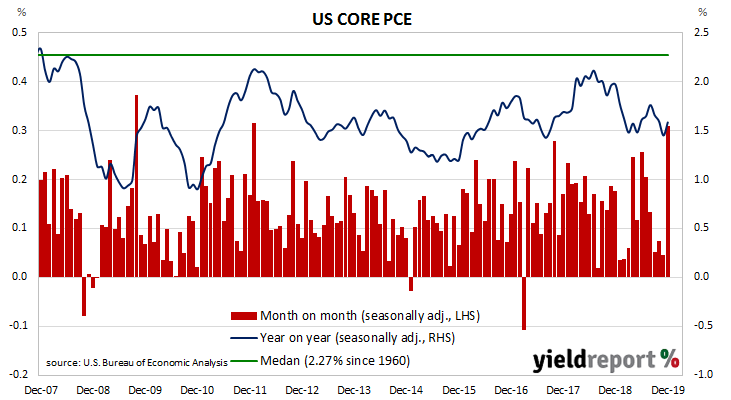One of the US Fed’s favoured measures of inflation is the change in the core personal consumption expenditures (PCE) price index. After hitting the Fed’s target at 2.0% in mid-2018, the annual rate then hovered in a range between 1.8% and 2.0% through to the end of 2018 before dropping in the first quarter of 2019 to around 1.5%. It then ranged between 1.5% and 1.8% for the rest of the year.
The latest figures have now been published by the Bureau of Economic Analysis as part of the December personal income and expenditures report. Core PCE prices increased by 0.3% for the month, above expectations and a jump from November’s flat result. On a 12-month basis, the core PCE inflation rate rebounded to 1.6% after slipping to 1.5% in November.
ANZ economist Daniel Been said, “This is encouraging but will not alter the Fed’s accommodative bias, which aims to lift actual and expected inflation.”
US Treasury yields finished the day considerably lower as markets factored in potentially less economic activity from a coronavirus-related slowdown in trade and tourism. By the end of the day, 2-year yields had dropped by 10bps to 1.32%, 10-year yields had shed 9bps to 1.50% while 30-year yields finished 5bps lower at 2.00%.

